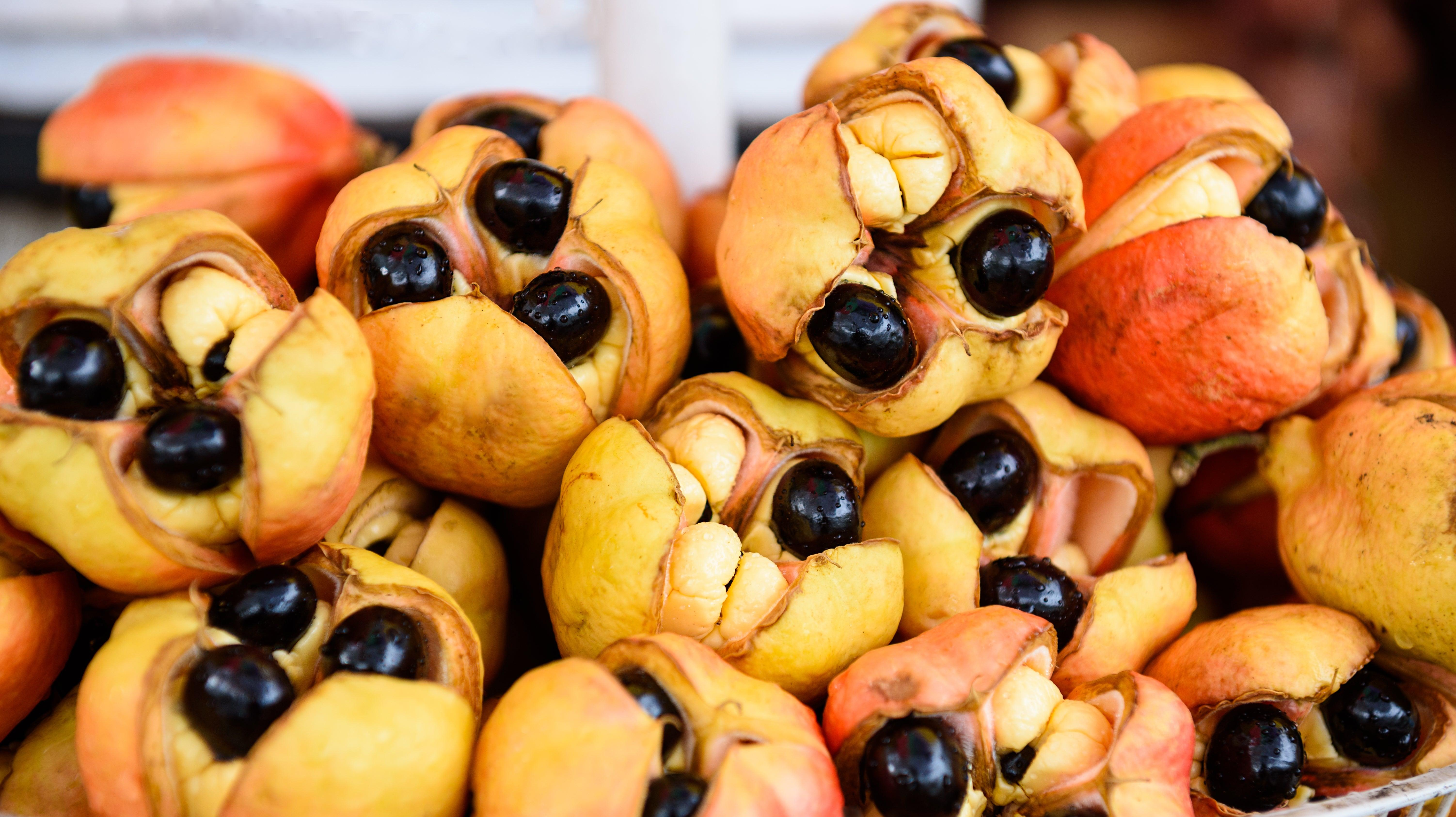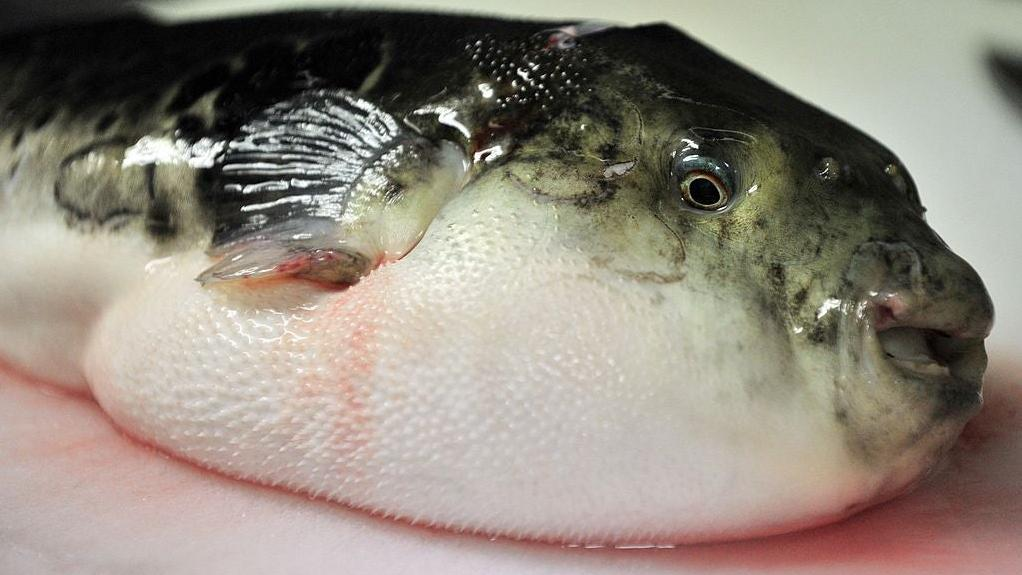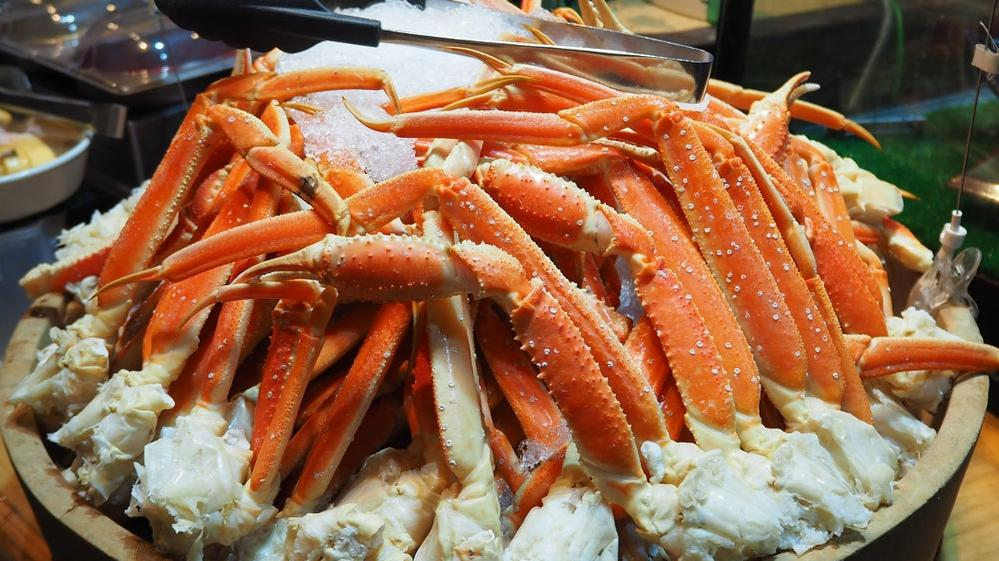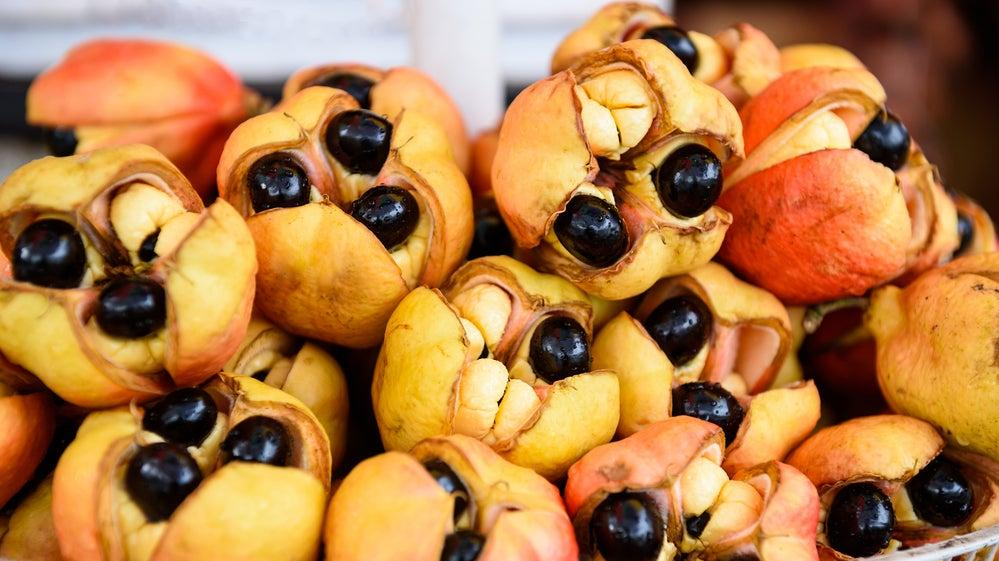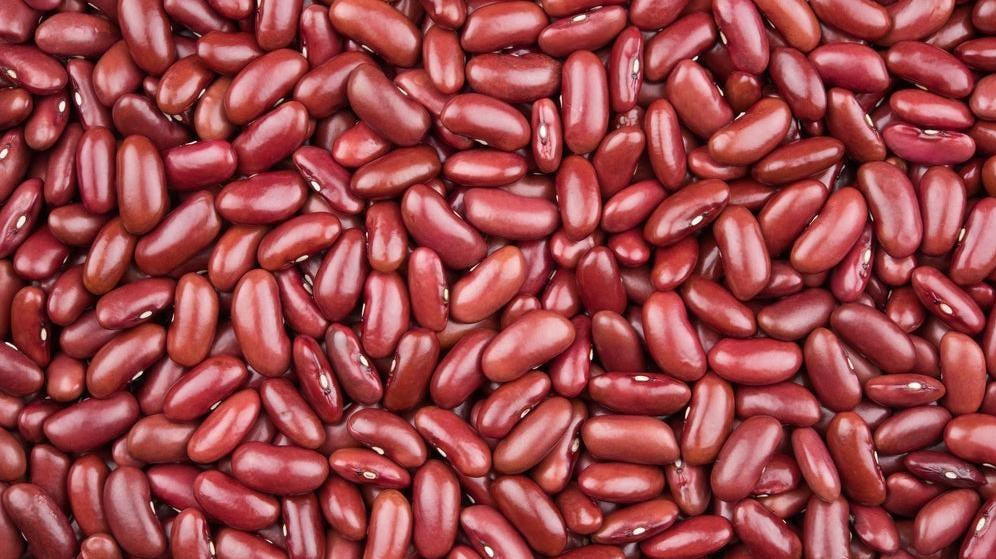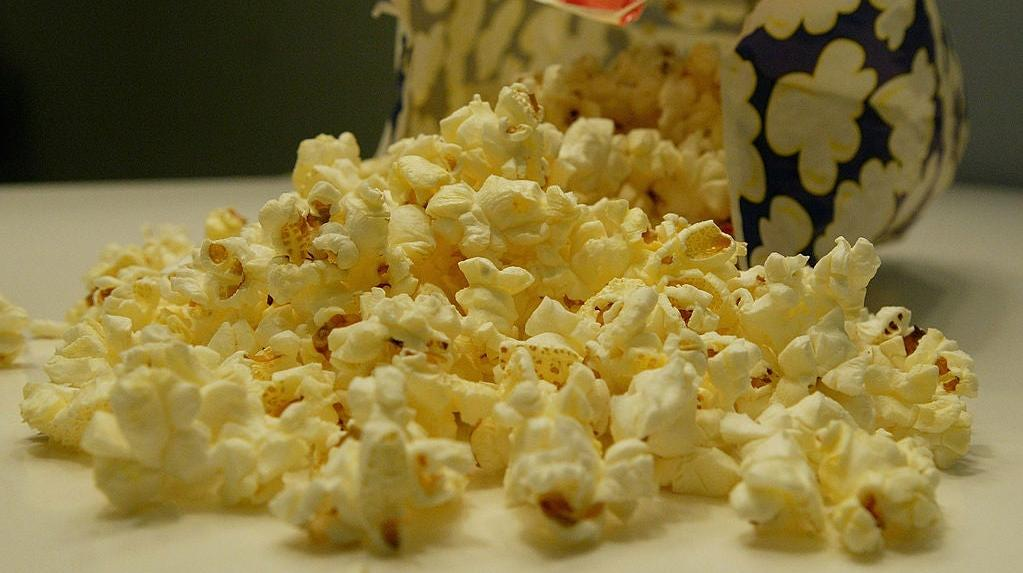9 Foods That Are Deadly Unless You Do It Right
These foods are all perfectly safe—until they're not.
Life is fragile. One minute, you're strolling along, deleting emails on your phone and listening to Sisqó—the next, you're dead, felled by a stray coconut. Or a hot dog. Or a rhubarb leaf.
When you think about it, all food has the potential to be deadly. A stray peanut could ignite anaphylaxis. A raw steak could attract a pack of wild dogs. A spaghetti noodle could wrap itself around your uvula like a boa constrictor. But some foods are deadlier than others, whether that's due to their sourcing, preparation, natural toxicity, or rock-hard exterior. (Looking at you, coconut.) Regardless, even the deadliest foods are worth trying once before you—well, you know.
Gooseneck barnacles are deadly to harvest
Percebes, otherwise known as gooseneck barnacles, are a seafood delicacy from the Galician region of Spain. They're ugly little bastards with orange flesh and brown, craggy shells that look a bit like witch fingernails. Despite their unappetizing facade, percebes (pronounced purr-seh-behs) are prized across Spain and Portugal for their fresh, salty meat. Percebes aren't dangerous to consume, but they're incredibly dangerous to harvest. Every fall and spring, local hunter-gatherers known as percebeiros harvest them by hand off of Galicia's seaside cliffs. The conditions are rough, with towering, icy waves threatening to pluck the harvesters off of the cliff at a moment's notice.
Fugu is deadlier than cyanide
Trust is key if you'd like to enjoy the bright, mild flavor of the pufferfish, or fugu. You have to be willing to put your life in the hands of a licensed fugu chef, one of Japan's most elite culinary experts. Requirements to become a licensed fugu chef vary on a regional basis; in Tokyo, for example, applicants need a cooking license, several years of experience, and the chops to pass both written and practical performance tests.
Why such strict regulations? This delicacy is 1,200 times more deadly than cyanide unless it's prepared perfectly. The fish contains a neurotoxin known as tetrodotoxin, present in several of the fish's organs, including the liver. Tetrodotoxin poisoning is fast and deadly, causing numbness, paralysis, and ultimately asphyxiation. To avoid wiping out their customer base, fugu chefs must train to learn how to safely remove all of the organs that contain traces of tetrodotoxin. What's left behind is a safe, mild fish, often eaten raw as sashimi.
Hot dogs are a unique choking hazard
Here at The Takeout, hot dogs are a religion—a way of life. That's why we were stunned to hear that our beloved doggies are allegedly the number one cause of choking-related injuries in children under three, according to John Hopkins Medicine.
Upon further inspection, the research cited by Johns Hopkins seems to be from a 1984 paper. In that paper, researchers conclude that 17% of food-related choking incidents in children under three are caused by "hot dog inhalation." It's tough to know if that almost 40-year-old statistic rings true today; either way, proceed with caution as you're enjoying those sweet weenies.
Alaska king crab are deadly to catch
There's a reason Deadliest Catch has been renewed for 18 seasons: the lives of Alaska king grab fishermen make for great TV. Like percebes, Alaska king crab isn't dangerous for consumers—but crabbing crews face incredible peril as they trawl the frigid Bering Sea for our clawed friends. Next time you raise a stink about crab prices, think about the folks doing the catching.
Unripe ackee fruit has a deadly toxin
The national fruit of Jamaica isn't actually native to Jamaica—it originated in West Africa and was introduced throughout the Caribbean islands by roaming slavers. But the stunning ackee fruit has captivated Jamaican consumers with its vibrant hues, high nutritional value, and versatility. But there's a catch: unripe ackee contains hypoglycin, a toxin which results in violent vomiting and hypoglycemia. The hypoglycin isn't an issue if the fruit is properly harvested—that is, left to ripen until its pods open naturally—and cooked. With that in mind, if you're lucky enough to happen on ackee fruit, leave it alone unless the red pod has burst open, revealing the buttery yellow fruit flesh within.
Rhubarb leaves are poisonous
Death by rhubarb pie is quite a way to go, but it's not impossible. That's because rhubarb leaves—both raw and cooked—contain high quantities of oxalic acid. Present in foods like rhubarb, leafy greens, and sweet potatoes, oxalic acid is an organic compound that's healthy in moderation—but too much pure oxalic acid, and you're looking at kidney failure. While the stems are perfectly safe to eat, the leaves are best left alone.
Dried kidney beans can be toxic
Throw some dried beans into your slow cooker, wait a few hours, and you're ready to dig in. Right? Eh, not so fast—dried beans, particularly kidney beans, contain a natural toxin called phytohaemagglutinin (PHA). High levels of PHA can cause a condition appropriately named "red kidney bean poisoning," with symptoms like nausea, vomiting, diarrhea, and abdominal pain. PHA is destroyed if beans are cooked properly—to t least 176 degrees, that is. But slow cookers may not get that hot, which is why some experts recommend boiling, draining, and rinsing dried beans prior to adding them to your crock pot.
Hákarl is poisonous
Rotten shark, anyone? Hákarl is an Icelandic delicacy composed mainly of fermented shark. Per Atlas Obscura, the fermented meat "smells like urine and can taste like strong cheese." That doesn't stop dedicated Icelanders (and tourists) from sampling the stuff.
The issue is that the Greenland sharks harvested for hákarl naturally contain high quantities of urea. Per The Verge, the sharks have high levels of trimethylamine oxide, or TMAO, a compound that is thought to balance the levels of urea. TMAO is poisonous to humans, so eating Greenland shark before it's dried and fermented is a bad idea. That's not a problem with proper fermentation—but if your hákarl hasn't been fermented for at least six months, watch out.
And microwave popcorn is worse than you thought
Popcorn is an objectively perfect snack. Unfortunately, microwave popcorn in particular is packed with harmful chemicals that might convince you to ditch Orville Redenbacher for good. First, microwave popcorn bags are lined with a grease-proof chemical coating, which was found to break down into perfluorooctanoic acid (PFOA). PFOA has been linked to both prostate and liver cancer, which is why it's been gradually phased out in the U.S. However, a 2020 study found that many new PFAS have taken its place—which "still present a concern for human health." When in doubt, stick to the homemade stuff.
